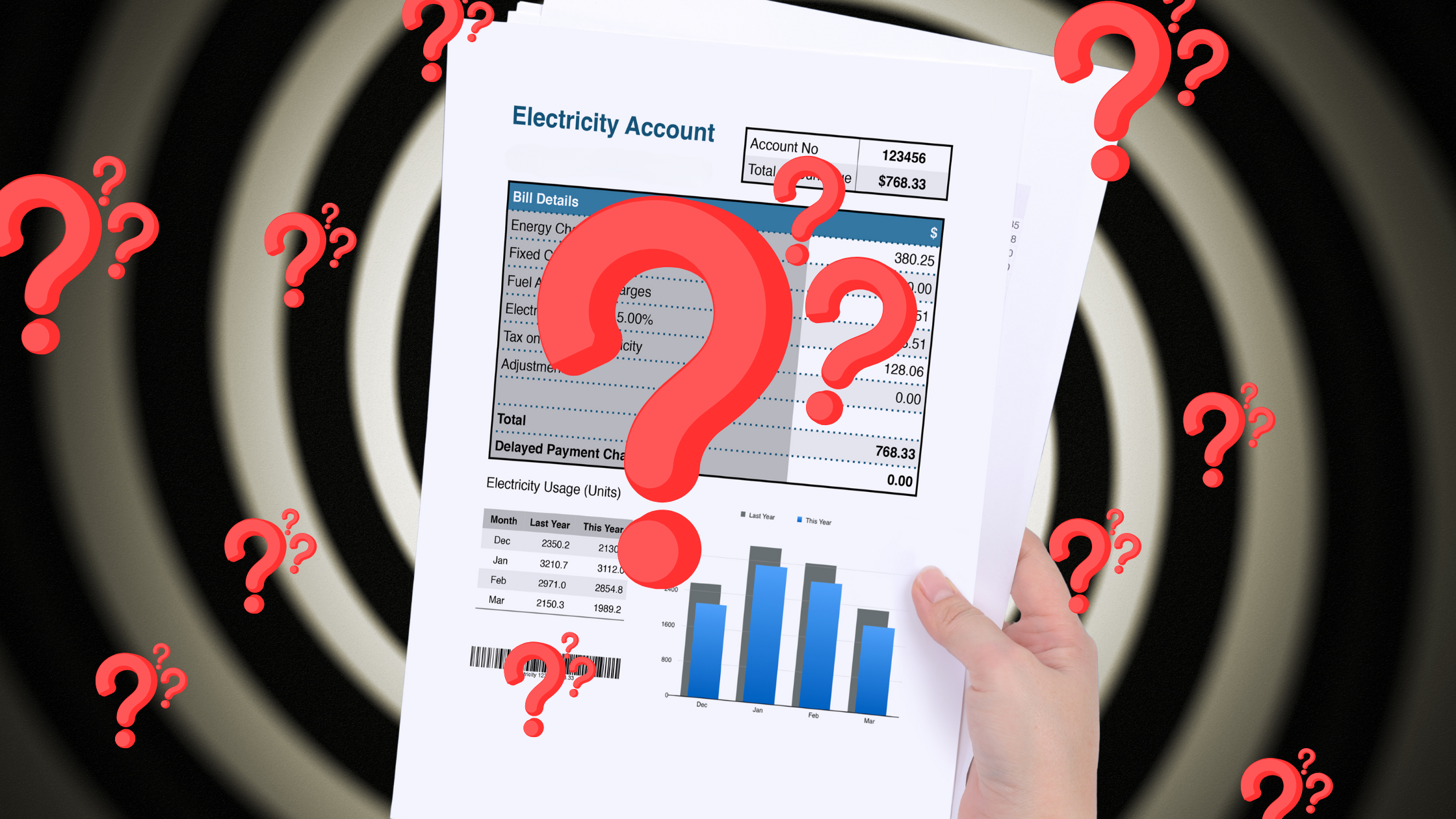Easily understand your electric bill to help you with budgeting and saving energy. In this guide, we’ll break down your electric bill, explain key terms, and offer money-saving tips.
1. Basic Components of an Electric Bill
Electric bills usually contain several important sections. Let’s explore each part:
- Account Information: This includes your account number, address, billing period, and due date. Confirm this information is correct.
- Meter Reading: This shows the amount of electricity used in kilowatt-hours (kWh) for the billing period. It includes both previous and current readings.
- Energy Consumption: This section shows the total energy used during the billing period. It’s measured in kWh and is the primary basis for your charges.
- Charges and Fees: Here, you’ll see the cost per kWh, service charges, taxes, and other fees. These vary depending on your location and utility company.
- Supply vs. Delivery Charges: This distinction is often overlooked. Supply charges cover the cost of electricity, while delivery charges cover the cost of delivering electricity to your home.
Knowing these components can give you a clearer view of your expenses.
2. Key Terms Explained
Electric bills contain terms that can be confusing. Here are some key terms explained:
- Kilowatt-hour (kWh): This measures electricity use. It’s the energy used if a 1,000-watt appliance runs for one hour.
- Demand Charges: Businesses often see demand charges based on peak energy levels during the billing period. This charge encourages lower peak energy usage.
- Tiered Rates: Some companies charge higher rates if you use large amounts of electricity. This is called a “tiered rate.”
- Fixed and Variable Charges: Fixed charges stay the same every billing cycle, regardless of usage. Variable charges depend on your energy consumption and change each month.
These terms can help you understand your bill better.
3. Factors Affecting Your Electric Bill
Several factors impact how much you pay each month. Understanding these factors can help you manage costs.
- Seasonal Changes: Bills often rise in summer or winter, when heating or cooling usage increases.
- Energy-Efficient Appliances: Older appliances often use more energy than newer, efficient models. Upgrading can save money over time.
- Habits and Usage Patterns: Leaving lights on, running appliances during peak hours, or using space heaters can raise bills.
- Rate Plans: Many utilities offer different rate plans. Time-of-use plans, for example, charge less during off-peak hours.
These factors influence your energy bill every month.
4. How to Read Your Electric Meter
Reading your electric meter can help you understand and track your energy use. There are two main types of meters: analog and digital.
- Analog Meters: These have small clock-like dials. Record each number shown on the dials. If the pointer is between numbers, round down.
- Digital Meters: These display numbers directly, making them easier to read. Write down the displayed number to know total kWh used.
By checking your meter regularly, you can monitor energy usage and identify any sudden spikes.
5. Understanding Billing Cycles and Tariffs
Electric bills are based on a monthly billing cycle, which tracks usage over about 30 days. Be sure to check the billing period listed on your bill.
Utilities often have different tariffs or pricing structures. Common tariff types include:
- Flat-Rate Tariff: This charges the same rate per kWh regardless of when you use electricity.
- Time-of-Use Tariff: This charges different rates based on the time of day, with lower rates during off-peak hours.
- Seasonal Tariffs: Some utilities adjust rates based on the season, usually charging more during high-demand times.
Choosing the right tariff can save you money. If you have a time-of-use plan, try running appliances during off-peak hours.
6. Tips for Lowering Your Electric Bill
Here are some practical tips for reducing your energy costs:
- Upgrade to Energy-Efficient Appliances: Appliances with the Energy Star label use less electricity.
- Use Smart Thermostats: Smart thermostats let you control heating and cooling more efficiently, which reduces unnecessary energy use.
- Seal Windows and Doors: Ensure your home is insulated to prevent drafts. This reduces heating or cooling costs.
- Switch to LED Lighting: LED bulbs use about 75% less energy and last longer than incandescent bulbs.
- Generate Your Own Power: PV systems use the sun to create power for your home or business. The less dependent you are on the utility company, the lower your bill will be.
7. Conclusion
Understanding your electric bill is essential for managing expenses and controlling energy use. By learning to read your bill, understanding meter readings, and applying energy-saving tips, you can save money and energy.
With small adjustments and gaining independence from the grid, you can make a noticeable difference in your monthly bill and support a more energy-efficient home.

